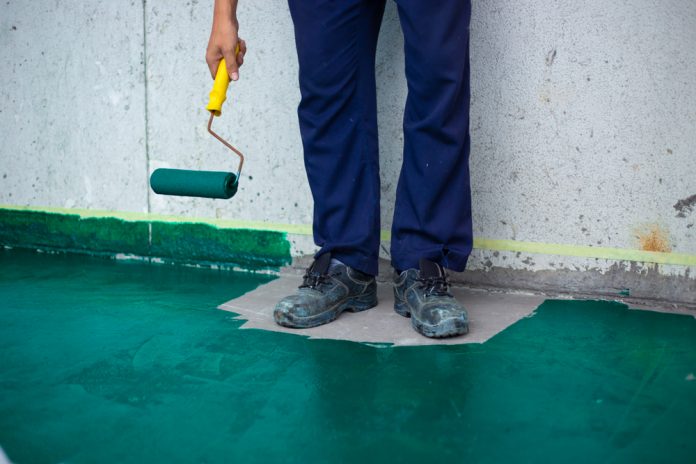Exterior paint provides protection to your paint. It protects your house surface from ultraviolet rays of sun, rain, shifts in temperature, and much more. So it is clear that the exterior paint should be done with a lot of care as it has to face various conditions. If the painting is not done properly, then you will have to face many problems. To avoid painting problems, you need to hire a professional painting company in your area.
To help you out following are some of the common paint problems along with their solutions:
Blistering Paint
It is referred to as small to medium-sized bubbles or blisters under the paint film. This problem is mostly seen on wood trim and siding.
Causes
- Paint has been applied in direct sunlight on a hot surface that trapped the solvent vapor as the paint dried quickly.
- The paint was applied on damp wood and this trapped moisture to expand the moisture paint film.
- Rain, dew, and high humidity penetrate in dried latex paint. The common reason will be that paint was of lower quality or the substrate surface preparation was inadequate.
- House moisture might escape through walls due to improper house ventilation.
Solution
- Scrape away the blistered paint. Allow your wood to dry completely before the painting.
- You need to ensure that you sand, prime, and paint in non-direct sunlight and in non-humid conditions.
- Using high-quality latex paint.
- Check and repair loose and missing caulking near your doors and windows.
- Siding ventilation is a must.
- Proper ventilation measures in the house should be made.
In addition to this, if you are looking to get professional assistance regarding a painting, then you need to hire Cape Cod painters to get the best painting for your house. The skilled team will do the task using high-quality paint, right techniques, and also guide you about the trending colors for your house.
Alligatoring and Checking
It is a type of paint film failure in which cracked pattern is developed on the surface resembling with reptile’s skin. On the other hand, checking is also a similar problem but it is less severe and it occurs due to long and fairly spaced cracks in paint film with shallow depth. The checking problem may become worse in some areas leading to a deep crack or split in the paint.
Alligatoring Causes
- The second coat was applied and first coat of primer or paint base was not fully dried.
- The second coat of paint was applied on incompatible paint like glossy paint or hard oil enamel on a latex-based paint.
- Oil based will crack with the passage of time and due to the variations in temperature.
Checking Causes
Natural aging occurs with old oil-based paint. The material that was painted mostly on wood will contract or expand with the passage of time.
Solution
- You should remove the old paint. After this sand, prime, and repaint using flexible latex-based paints.
- You should use high-quality latex paint.
Efflorescence
This problem occurs due to painted masonry construction. It is identified by crusty white salt deposits bubbling throughout the paint film from below masonry structure. This problem is caused by bricks or concrete dissolving with water and then leaching to surface due to water evaporation.
Causes
- Due to poor surface preparation. You might not have removed the prior efflorescence or wash it before repainting.
- Inadequate waterproof basement walls allowed groundwater penetration.
- Masonry was painted before the concrete or mortar was cured or dried out.
- Cracks inside the masonry walls or poor tuckpointing allow the water to go behind the masonry wall.
Solution
- If moisture is getting inside your masonry wall, then you need to eliminate the sources of moisture by proper tuckpointing cracks or missing mortar in a wall or patching concrete with latex concrete patch.
- In addition to this, you should clean out gutters, downspouts, and caulk joints surrounding your windows or doors using a butyl rubber caulk.
- If moisture is entering to wall from the outside through basement walls, then you need to apply waterproofing to the outside of your wall.
- You need to remove all the efflorescence and lose flaking and chalking paint using a wire brush, scraping, or power washing. After this, you need to clean the area with trisodium phosphate cleaning solution and rinse it with clean water. Let it completely dry and then paint it using high-quality latex paint.
Furthermore, if you are looking to paint the interior of your house, then you should contact interior painters on Cape Cod to get satisfactory results.
Chalking
It is a fine chalk powder that builds on the surface of the paint film. It is the paint pigment released by the paint binders that are broken due to the weather. In severe condition, it may run off and stain the surrounding construction.
Causes
- Usage of cheap quality exterior paint that contains a high level of pigment extenders.
- Improper paint like interior paint used for exterior painting.
- The paint application was done on low-quality factory-finished aluminum siding.
- The paint was over-thinned before the application and porous surface was not sealed properly before painting.
Solution
- It should be removed before repainting. You can remove it using scrubbing or power washing with tri-sodium phosphate and rinse with clean water. Let it dry and then paint with high-quality latex paint
- For cleaning the brick area stained by chalking runoff, the masonry should be scrubbed using a specific masonry cleaning solution. If the problem persists, then you should call experienced cleaning contractor for cleaning the brick.
Mildew
It is a fungus that grows on the paint film or caulk and it is identified by gray, brown, green, or dark black blotchy spots.
Causes
- Poor ventilation, moisture, lack of direct sunlight will lead to fungus development. Remember that the underside of eaves and soffits are prone to mildew.
- Paint might have applied over a surface or prior paint film that is still having mildew.
- A low-quality paint was used with adequate mildewcide.
- Bare wood might not be primed before painting.
Hope now you are aware of the five common problems and solutions that you might face during exterior painting. If you are planning to get rid of the problem, then you should hire the best house painters to get the best painting finish.


































![5 Essentials of Employee Engagement for Improving Business [Expert Recommended]](https://www.techinexpert.com/wp-content/uploads/2019/07/ab-324x160.png)